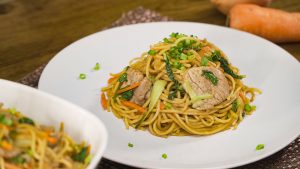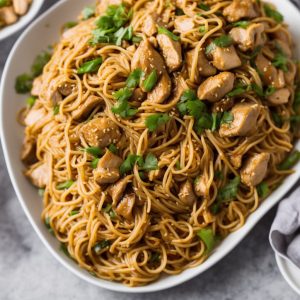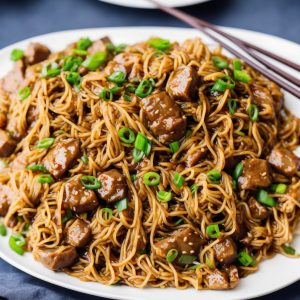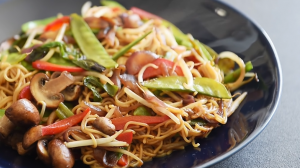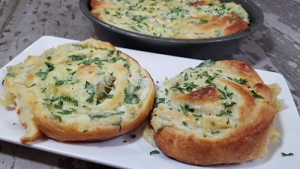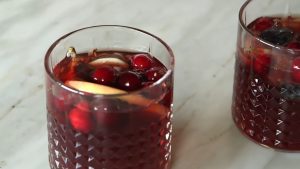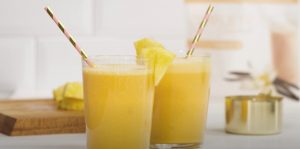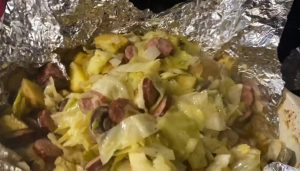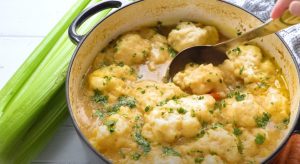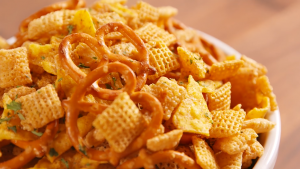This Shrimp Chow Mein recipe is a delightful mix of succulent shrimp, colorful vegetables, and satisfying noodles, all tossed in a rich, savory sauce. It promises an exciting escape from the ordinary, with a burst of flavors and textures that will tantalize your taste buds. Perfect for weeknight dinners or special occasions, this recipe is sure to impress.
The ingredients for this recipe are commonly found in most supermarkets. However, there might be a couple of items that you may need to specifically look out for. One of them is the chow mein noodles, which you can usually find in the Asian food aisle. Another is the oyster sauce, a key component of the savory sauce that makes this dish so flavorful.
Ingredients for Shrimp Chow Mein Recipe
shrimp: This is the star of the dish. Shrimp adds a rich flavor and a wonderful texture.
vegetable oil: Used for sautéing the ingredients.
cabbage: Adds crunch and nutritional value.
red cabbage: Adds color and extra crunch.
celery: Provides a nice crunch and a subtle flavor.
carrot: Adds sweetness and color to the dish.
garlic cloves: Enhances the flavor.
sweet soy sauce: Adds sweetness to balance the savory elements.
soy sauce: Gives the savory, umami flavor.
oyster sauce: Adds depth and complexity to the flavor profile.
water: Used to create the sauce.
chow mein noodles: The base of the dish, these noodles have a satisfying chewy texture.
bean sprouts: Adds a refreshing crunch and a subtle flavor.
sesame seeds: Provides a nutty flavor and a bit of crunch.
One reader, Krissy Cutler says:





This shrimp chow mein recipe is a game-changer! The flavors are so vibrant and the shrimp is perfectly cooked. The combination of vegetables and sauces creates a delightful harmony. It's now a family favorite, and I can't wait to make it again!
Essential Techniques for Crafting Shrimp Chow Mein
How to cook shrimp: Heat a large pan or wok on high heat with oil and cook the shrimp for 1 minute on each side until they turn pink. Remove the shrimp from the pan and set aside.
How to stir-fry vegetables: In the same pan, add the cabbage, red cabbage, celery, and carrots. Cook for 2 to 3 minutes until the vegetables are slightly wilted. Add the garlic and cook for an additional 30 seconds.
How to make the sauce: Add soy sauce, sweet soy sauce, oyster sauce, and water to the pan. Bring the mixture to a boil for 1 minute to allow the flavors to meld.
How to cook chow mein noodles: Add the chow mein noodles and bean sprouts to the pan. Toss everything together to coat the noodles and vegetables with the sauce.
How to finish the dish: Return the cooked shrimp to the pan and toss everything together. Serve the shrimp chow mein garnished with sesame seeds.
How To Make Shrimp Chow Mein
Add a nice seafood twist to a traditional Asian noodle dish with our shrimp chow mein recipe. The shrimp flavors blend perfectly with the savory sauce.
Serves:
Ingredients
- 1lbshrimp,peeled and deveined, 13-15 count
- 2tbspvegetable oil
- 1cupcabbage,thinly sliced
- ½cupred cabbage,thinly sliced
- 1cupcelery,thinly sliced
- 1carrot,thinly sliced
- 2garlic cloves,minced
- 2tbspsweet soy sauce,aka Kecap Manis
- 2tbspsoy sauce,low sodium
- 4tbspoyster sauce
- 1cupwater
- 12ozchow mein noodles,cooked a minute shy of the directions
- 6ozbean sprouts,optional
- sesame seeds,for garnish optional
Instructions
-
Heat a large pan or wok on high heat with the oil and cook the shrimp for 1 minute on each side then remove the shrimp from the pan and add in the cabbage, red cabbage, celery and carrots.
-
Cook 2 to 3 minutes until wilted, add the garlic and cook for an additional 30 seconds.
-
Add the soy sauce, sweet soy sauce, oyster sauce and water and bring to a boil for 1 minute.
-
Add in the pasta, bean sprouts and shrimp and toss to coat.
Nutrition
- Calories: 520.94kcal
- Fat: 12.26g
- Saturated Fat: 1.82g
- Trans Fat: 0.13g
- Monounsaturated Fat: 6.36g
- Polyunsaturated Fat: 2.80g
- Carbohydrates: 71.74g
- Fiber: 5.41g
- Sugar: 5.63g
- Protein: 31.17g
- Cholesterol: 214.32mg
- Sodium: 2073.42mg
- Calcium: 141.10mg
- Potassium: 663.66mg
- Iron: 4.62mg
- Vitamin A: 216.35µg
- Vitamin C: 22.27mg
Pro Tip for Perfecting Your Shrimp Chow Mein Technique
When cooking the shrimp, it's important not to overcook them as they can become tough and lose their sweet flavor. Shrimp cook very quickly, usually in about 2 minutes, and you'll know they're done when they turn pink and opaque. Also, when adding the noodles and bean sprouts to the pan, ensure to toss them gently to avoid breaking the noodles and to evenly distribute the sauce.
Time-Saving Tips for Preparing Shrimp Chow Mein Recipe
Prep ahead: Chop vegetables and marinate the shrimp the night before to save time on the day of cooking.
One-pot wonder: Consider using a large skillet or wok to cook the entire dish in one pot, reducing the number of dishes to clean.
Quick cook: Use pre-cooked shrimp to cut down on cooking time and simplify the preparation process.
Efficient chopping: Utilize a food processor to quickly chop the vegetables, saving time on manual chopping.
High heat: Cooking at a higher temperature can help speed up the cooking process, but be mindful not to overcook the ingredients.
Substitute Ingredients For Shrimp Chow Mein Recipe
- shrimp - Substitute with sliced chicken breast: Chicken breast can provide a similar texture and absorb the flavors of the dish well, making it a suitable substitute for shrimp.
- sweet soy sauce - Substitute with hoisin sauce: Hoisin sauce has a sweet and savory flavor profile similar to sweet soy sauce, making it a good alternative in the recipe.
How to Beautifully Present Shrimp Chow Mein
Elevate the plating: Arrange the chow mein noodles in a nest-like shape on the plate, creating a visually appealing base for the dish.
Garnish with sesame seeds: Sprinkle toasted sesame seeds over the shrimp chow mein to add a nutty flavor and a delightful crunch.
Incorporate vibrant colors: Integrate the colorful vegetables such as cabbage, red cabbage, and carrots to create a visually stunning and appetizing dish.
Emphasize the shrimp: Strategically place the succulent shrimp on top of the noodles to showcase this premium ingredient.
Utilize negative space: Leave some areas of the plate empty to allow the dish to breathe and create a balanced and sophisticated presentation.
Consider the plate shape and size: Choose a plate that complements the dish, ensuring that the presentation is harmonious and visually striking.
Balance the textures: Ensure a balance of textures by incorporating the crispy bean sprouts and the tender shrimp and noodles.
Highlight the sauce: Drizzle the savory sauce over the dish in an artful manner, drawing attention to its rich flavor and adding an elegant touch to the presentation.
Essential Kitchen Tools for Making Shrimp Chow Mein
- Pan: A flat-bottomed utensil used for cooking, typically made of metal and with a long handle.
- Wok: A versatile round-bottomed cooking vessel with high, sloping sides, commonly used in Chinese cuisine.
- Tongs: A tool with two arms and a pivot, used for gripping and lifting objects.
- Knife: A cutting tool with a sharp blade, used for slicing and chopping ingredients.
- Cutting board: A durable board used for cutting and preparing food.
- Spatula: A broad, flat utensil with a long handle, used for lifting and flipping food items.
- Whisk: A kitchen tool with a handle and wire loops, used for beating and blending ingredients.
- Strainer: A device with a perforated surface used for separating solid particles from liquid.
- Grater: A tool with a rough surface used for shredding or grating ingredients.
- Measuring cups and spoons: Tools used for accurately measuring and portioning ingredients in cooking and baking.
- Cooking pot: A deep, round container with a handle and often a lid, used for cooking food on a stovetop.
- Colander: A bowl-shaped container with perforations used for draining liquids from food items.
- Saucepan: A deep cooking pan with a long handle and a lid, used for heating and cooking sauces, soups, and other liquids.
- Skewers: Long, narrow metal or wooden rods used for holding and cooking food items, often on a grill or over an open flame.
- Rolling pin: A cylindrical tool used for flattening and shaping dough.
- Mortar and pestle: A pair of tools used for crushing, grinding, and mixing ingredients, typically used for spices and herbs.
Mastering the Art of Storing and Freezing Shrimp Chow Mein
Allow the shrimp chow mein to cool completely before storing it in an airtight container in the refrigerator. It will keep fresh for up to 3-4 days.
If you have leftovers that you want to freeze, transfer the cooled chow mein to a freezer-safe container or resealable plastic bag. Squeeze out as much air as possible to prevent freezer burn.
When freezing, it's best to portion the chow mein into individual serving sizes for easier thawing and reheating later.
Label the container or bag with the date and contents before placing it in the freezer. Frozen shrimp chow mein will maintain its quality for up to 2-3 months.
To reheat frozen chow mein, first, thaw it in the refrigerator overnight. Once thawed, you can reheat it in a pan or wok over medium heat, stirring occasionally, until it's heated through and the shrimp is cooked. You may need to add a splash of water or chicken broth to help loosen the sauce and prevent the noodles from drying out.
Alternatively, you can reheat the thawed chow mein in the microwave. Place it in a microwave-safe dish, cover it with a damp paper towel, and heat it in 30-second intervals, stirring between each interval, until it's heated through.
Keep in mind that the texture of the vegetables and noodles may change slightly after freezing and reheating, but the dish will still be delicious and satisfying.
The Best Methods for Reheating Leftover Shrimp Chow Mein
Reheat the shrimp chow mein in a large skillet or wok over medium-high heat. Add a splash of water or chicken broth to help loosen the noodles and create some steam. Stir-fry for 3-5 minutes until heated through and the noodles are slightly crispy.
For a quick and easy method, reheat individual portions of shrimp chow mein in the microwave. Place the desired amount in a microwave-safe dish, cover with a damp paper towel, and heat on high for 1-2 minutes, stirring halfway through. The damp paper towel will help prevent the noodles from drying out.
If you have time, reheat the shrimp chow mein in the oven. Preheat the oven to 350°F (175°C). Spread the chow mein evenly in a baking dish, cover with foil, and bake for 10-15 minutes. Remove the foil and bake for an additional 5 minutes to crisp up the noodles.
For a crispy texture, reheat the shrimp chow mein under the broiler. Spread the chow mein on a baking sheet and place it under the broiler for 2-3 minutes, stirring occasionally, until the noodles are crispy and heated through. Keep a close eye on the noodles to prevent burning.
If you have an air fryer, use it to reheat your shrimp chow mein for a crispy result. Preheat the air fryer to 350°F (175°C), place the chow mein in the basket, and cook for 3-5 minutes, shaking the basket halfway through. This method will give you crispy noodles without the need for additional oil.
Fascinating Trivia About Shrimp Chow Mein
Shrimp chow mein is a popular Chinese dish that originated in the Taishan region of Guangdong province. It is a versatile dish that can be customized with various vegetables and protein options, making it a favorite among many people.
Shrimp Chow Mein: Budget-Friendly or Splurge-Worthy?
The shrimp chow mein recipe is quite cost-effective for a household. The ingredients, such as shrimp, vegetables, and noodles, are reasonably priced and readily available. The dish offers a delightful combination of flavors and textures, making it a satisfying meal for a family. The approximate cost for a household of 4 people would be around $20-$25, making it an affordable and delicious option for a weeknight dinner. Overall Verdict: 9.
Is Shrimp Chow Mein Healthy or Unhealthy?
The shrimp chow mein recipe is a relatively healthy dish with a good balance of protein, vegetables, and carbohydrates. Shrimp is a lean protein source, low in calories and high in essential nutrients like omega-3 fatty acids, vitamin B12, and selenium. The recipe includes a variety of vegetables such as cabbage, carrots, and bean sprouts, which provide dietary fiber, vitamins, and minerals. However, the use of oyster sauce and soy sauce may contribute to a higher sodium content, which could be a concern for individuals with high blood pressure or those watching their salt intake.
To make this recipe even healthier, consider the following suggestions:
- Reduce the amount of oyster sauce and soy sauce to lower the sodium content, or opt for low-sodium alternatives
- Increase the proportion of vegetables to noodles to boost the fiber and nutrient content of the dish
- Use whole wheat or buckwheat noodles instead of traditional chow mein noodles for added fiber and complex carbohydrates
- Incorporate additional nutrient-dense vegetables like bok choy, bell peppers, or mushrooms to enhance the overall nutritional value
- Use a healthier cooking oil, such as olive oil or avocado oil, which are rich in monounsaturated fats and have potential health benefits
- Garnish with fresh herbs like cilantro or green onions for added flavor and antioxidants
Our Editor's Honest Opinion on This Shrimp Chow Mein Recipe
This shrimp chow mein recipe is a delightful combination of flavors and textures. The use of fresh vegetables and succulent shrimp creates a harmonious balance, while the blend of soy sauce, oyster sauce, and sweet soy sauce adds depth to the dish. The addition of bean sprouts and sesame seeds provides a delightful crunch, elevating the overall experience. The cooking process is straightforward, making it accessible for home cooks. Overall, this recipe promises a satisfying and flavorful chow mein that is sure to impress.
Enhance Your Shrimp Chow Mein Recipe with These Unique Side Dishes:
Delicious Alternatives to Shrimp Chow Mein Recipe
Perfect Appetizers and Desserts to Complement Shrimp Chow Mein
Why trust this Shrimp Chow Mein Recipe:
This recipe is a trusted choice for your next meal. The fresh shrimp ensures a delightful seafood flavor, while the combination of cabbage, celery, and carrot provides a colorful and nutritious mix. The savory blend of soy sauce, oyster sauce, and sweet soy sauce infuses the dish with rich umami taste. The addition of chow mein noodles and bean sprouts offers a satisfying texture. The use of sesame seeds adds a final touch of aromatic delight. Trust in this recipe for a flavorful and wholesome shrimp chow mein experience.
Was this page helpful?
Have your own special recipe to share? Submit Your Recipe Today!



